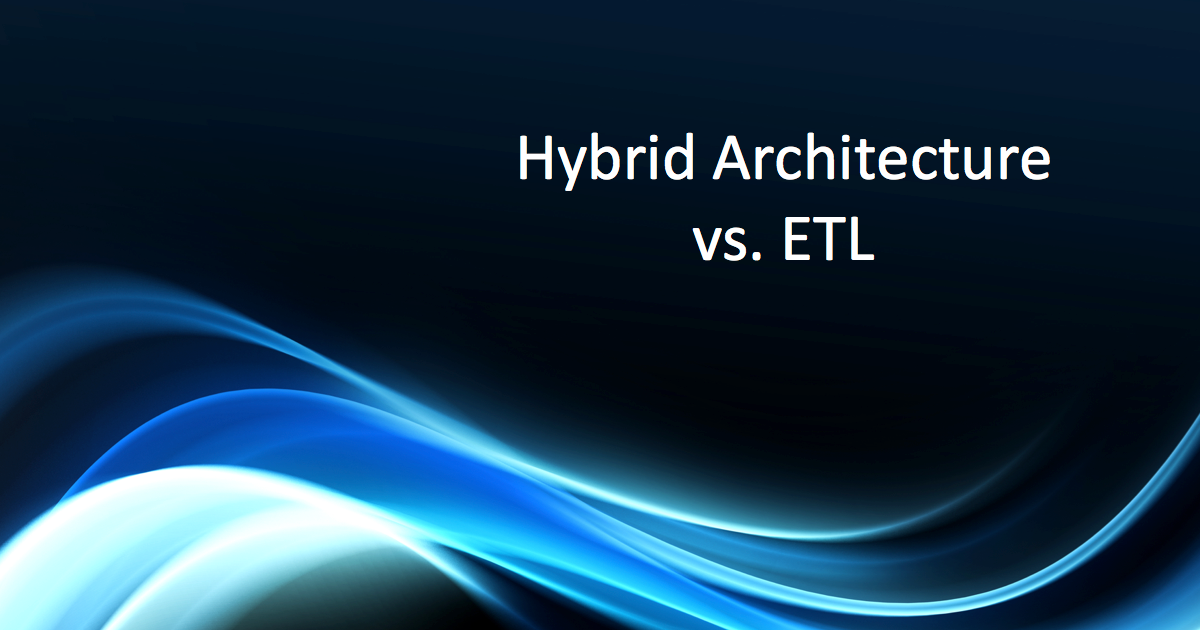Let’s take a look at hybrid architecture, and how the ability to perform real-time integration and processing can remove latencies associated with traditional ETL.
 With the ability to take advantage of a hybrid architecture for real-time events, organizations have to rethink how they move data around their environments. Traditional data acquisition techniques, such as extract, transform, and load (ETL), focused on the integration of a limited number of data sources linked with a similarly constrained number of data targets—all within the data center. Because of the restrictions of the network capacity and the underlying database constraints, traditional ETL focused on point-to-point integration with arbitrary, or batch-oriented, timeframes.
With the ability to take advantage of a hybrid architecture for real-time events, organizations have to rethink how they move data around their environments. Traditional data acquisition techniques, such as extract, transform, and load (ETL), focused on the integration of a limited number of data sources linked with a similarly constrained number of data targets—all within the data center. Because of the restrictions of the network capacity and the underlying database constraints, traditional ETL focused on point-to-point integration with arbitrary, or batch-oriented, timeframes.
This type of directional point-to-point integration creates a lot of friction in the configuration and ongoing maintenance of data engineering and migration activities. Instead of companies flexibly directing data at one or more location(s)—on-premises, public cloud, hybrid cloud, etc.—ETL requires a configuration for each connection. In addition, it can be difficult to make adjustments as data requirements shift.
This becomes even more complex when organizations add real-time streaming data to their data integration activities. The connection of real-time events between hybrid environments must have the following characteristics:
- Real-Time Processing: As events stream from their origin to their destination(s), companies must perform the integration as events occur to avoid latency in processing and thus the impact of those events.
- Multidirectional Integration: The integration needs to be able to coordinate between multiple points to support multiple disparate use case requirements —operational, analytical, exploratory—at the same time.
The key attributes of real-time processing and multidirectional integration remove the friction that traditional ETL placed on streaming data integration. This removal of barriers enables organizations to implement the types of hybrid architecture they need to develop competitive advantage.
To learn more about the benefits of hybrid cloud, visit our “Hybrid Cloud Integration” solutions page, or schedule a demo to speak with a Striim technologist regarding your hybrid architecture.





















